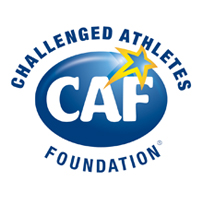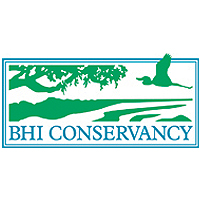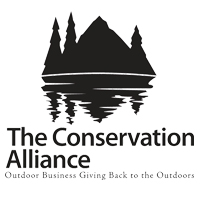Blister Care
Running the Badwater Ultramarathon is the true test of an athlete’s endurance, training, tactics and proper body maintenance. One of the obstacles that seems to prevent many from finishing is problems with blistering. Before competing in my first Hi-Tec Badwater race in 1994, I had the privilege of Rhonda Provost teaching me foot-care techniques. (She’s the only woman to have done the double-crossing from Badwater to Whitney and back in 1995.) Since that time, I’ve taken advice from other runners as well, with the hopes that we could devise some way to prevent the inevitable blistering problems that develop during this event. When I competed the second time in 1996, I was able to finish the race with NO blisters at all by using the following techniques. My hope is that these tips will help you, the competitor, successfully travel this course in more comfort, due to sharing the techniques I have learned over the years.
I have seen and worked on feet so unbelievably blistered from this event it would make you think they have been boiled in oil. Often it has been a complete surprise to the athlete, as more often it seems many have taken it for granted that they won’t blister in Badwater because they don’t blister in other 100 milers. Please take the precautions, and maybe you can get through this event without them! Even with these measures I suggest, it’s not always the cure. In 1998 I spent significant time with Robert Thurber from Texas. By Panamint (72 miles) even with prior taping, his feet were so bad he had to be carried off the course. I tried everything to prevent this from happening to him, but his calluses were very thick, and he had blistered massively on his heels under them.
I also highly recommend the book advertised in UltraRunning Magazine, “Fixing Your Feet”, by John Vonhof. It is a very complete practical synthesis on proper foot care. He goes into a lot of specifics on every detail of foot care, and where things can be purchased. It’s just great and I believe every competitor would benefit form using it as a reference.
My booklet is specific to Badwater, therefore it might differ somewhat from the techniques that Vonhof recommends in his book.
Items for foot care box:
- Swabs (for applying benzoin.)
- Toe nail clippers, fingernail file, pedicure file.
- Alcohol swipes.
- Tincture of Benzoin (it also comes in spray.)
- Sharp scissors (very pointed.)
- Tweezers to pull blister out to cut a hole in it.
- Tapes (Micropore and Elastikon.)
- Foot powder (Zeasorb.)
- Betadine (for cleansing.)
- Extra Socks
- Second Skin (A gel for burns and blisters.)
Preparation of Feet Prior to Competition.
File down any calluses with a pedicure file so that if a blister develops you can get to it so it can be treated. If thick calluses are allowed to remain, they are next to impossible to get underneath to fix the blister during this event. Many times it has caused an athlete to drop out. Make sure toenails are trimmed (square) and file them so no rough edges remain.
Pre-Taping:
I recommend pre-taping the night before the race so the tape has time to conform to your feet. By taping the night before, it’s one less thing to get together on race day, and if anything comes unstuck it will take less time to fix. Micropore (by 3M) seems to work well (it is like paper) and conforms to the shape of the foot. Another tape that has been helpful is Elastikon (by Johnson&Johnson). It is slightly thicker and stretchy for the heels and balls of the foot and it is breathable. I DO NOT recommend duct tape. We have found that duct tape doesn’t breathe and causes the area that has been taped to become edematous, sometimes causing worse blisters underneath the tape. It also tears the skin that has been taped when it’s removed, causing a great deal of pain. Pre-tape any areas that has blistered before, or might be a friction point. Spread Tincture of Benzoin over the area to be taped. Allow the Tincture to become tacky, then tape as flatly and neatly as possible. Cut off any wrinkles or corners of the tape. Tincture of Benzoin can be purchased at a pharmacy.
Socks:
Make sure you’ve tried your socks prior to the event. Everyone seems to have their own favorite. In recent years, runners such as Monica Scholz have had excellent results (blister-free) with Injinji toe socks (known as “Tsoks”) which feature individual toes. With regular socks, seams are sometimes a problem. Sometimes it helps to turn the seam-side out. Any sock needs to fit well, with no wrinkling. Cotton socks provide no wicking and tend to make balls (pills). Any amount of sand in a sock seems to cause blistering.
Shoes:
Make sure shoes aren’t black, they absorb too much heat. Make sure insoles are insulating. I wear very padded orthotics that also provide insulation against the heat. Consider extra cushioning but don’t try something you haven’t trained with. Anklet nylons have been used to provide the innermost layer, then ultrathin socks. Personally, I found them too slippery. They caused my feet to move around too much in the shoe, which can also cause blisters. Have an extra pair of shoes available in case your feet swell. It also helps to keep them in a zip-lock bag in the ice chest, if you have room, to keep them cool. I’ve been able to complete the race in the same pair of shoes, however.
Treating Blisters After They Develop:
Clean the area with alcohol. Drain blister by cutting a hole in it, (a small hole not a pin prick.) This prevents the blister from refilling. Place Second Skin over the blister. Try to leave skin intact over the blister. Treat the area with Tincture of Benzoin, once again, so that the tape will stick. Tape over Second Skin. Once the skin is moist from sweat, it’s harder to get the tape to stick. I use foot powder (Zsasorb) to dry the feet after the benzoin and before the taping.
Lanolin or Vaseline:
Some runners like to use these preparations to prevent blistering. I have found that they don’t work for me. The drier I can keep my feet, the better. However, if using such a preparation has worked for you and you’ve trained in the desert with it, then by all means use it!
Compeed:
I have had no success using Compeed for Badwater. Others have used it to alleviate the pain of a blister quickly. The problem seems to be that it might help at the immediate time, but trying to get it off is a nightmare. It sticks to the skin and shifts. I treated three athletes last year that were in terrible pain from Duct Tape and Compeed. They wanted to climb Whitney after the race and their feet were in such bad shape they could hardly walk. In trying to remove it, the skin over the blister and the tissue underneath often comes off. The raw flesh is very tender and susceptible to infection. You might try it as a last ditch resort, but I’ve treated some very painful feet due to it’s use.
Comments from John Vonhof, author of “Fixing Your Feet”
The number one factor is knowing what your feet need, and how to do it, before you have to do it. I have patched many feet at ultras and adventure races and have found that most racers have a fairly good knowledge base of what they should be doing. They know it’s smart to wear the right kind of socks and to have footwear that fits well. Many have also made footcare kits for their crews. I would make a rough guess and say about 30-40% are well versed in what their feet need and how to do it. The other 60-70% kind of wing it. They’ve read about footcare but somehow it falls lower on the priority list than does training, finding foods they can tolerate, the right flashlight for night running, and other choices. So they start their race and manage well for a while-until problems develop.
To have and keep healthy feet, you have to know what works for them in the sports in which you participate. You also have to know what to do when what worked no longer works. In other words, a fallback plan with the equipment to back it up and the knowledge of how to use it. Let me give some examples.
- Learn what lubricant works but have a container of powder handy.
- Learn what socks work but have one or two extra pair of other types.
- Learn how to tape the hot spots that might develop.
- Learn how to tape your toes, heels, and every other part of your feet just in case blisters form.
- Learn how to tape like a pro and then practice taping and then practice some more, and then start over until your taping is perfect.
- Learn that if you tape one toe, it may require a bit of tape on the next toe.
- Learn how to lance blisters and patch over them.
- Learn what happens to your feet when you don’t change wet socks and your feet become macerated and feels like there is one humongous blister on the bottom of each foot.
- Learn that something simple like properly trimming and filing your toenails can prevent toe blisters and even black toenails.
- Learn that in a 135-mile race, if you don’t control your feet, they will control you.
- Learn that you may know how to patch your feet, but you crew may not unless you teach them.
- Learn that an inexpensive shoehorn can prevent the formation of heel blisters when you try to shove your foot into your shoe because you are in a hurry to get out of the aid station.
The bottom line is that if you don’t learn what works for your feet, intentionally, you will learn the hard way.










